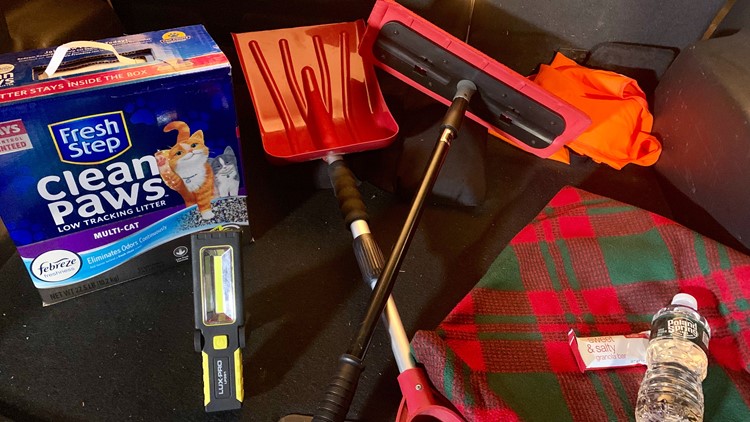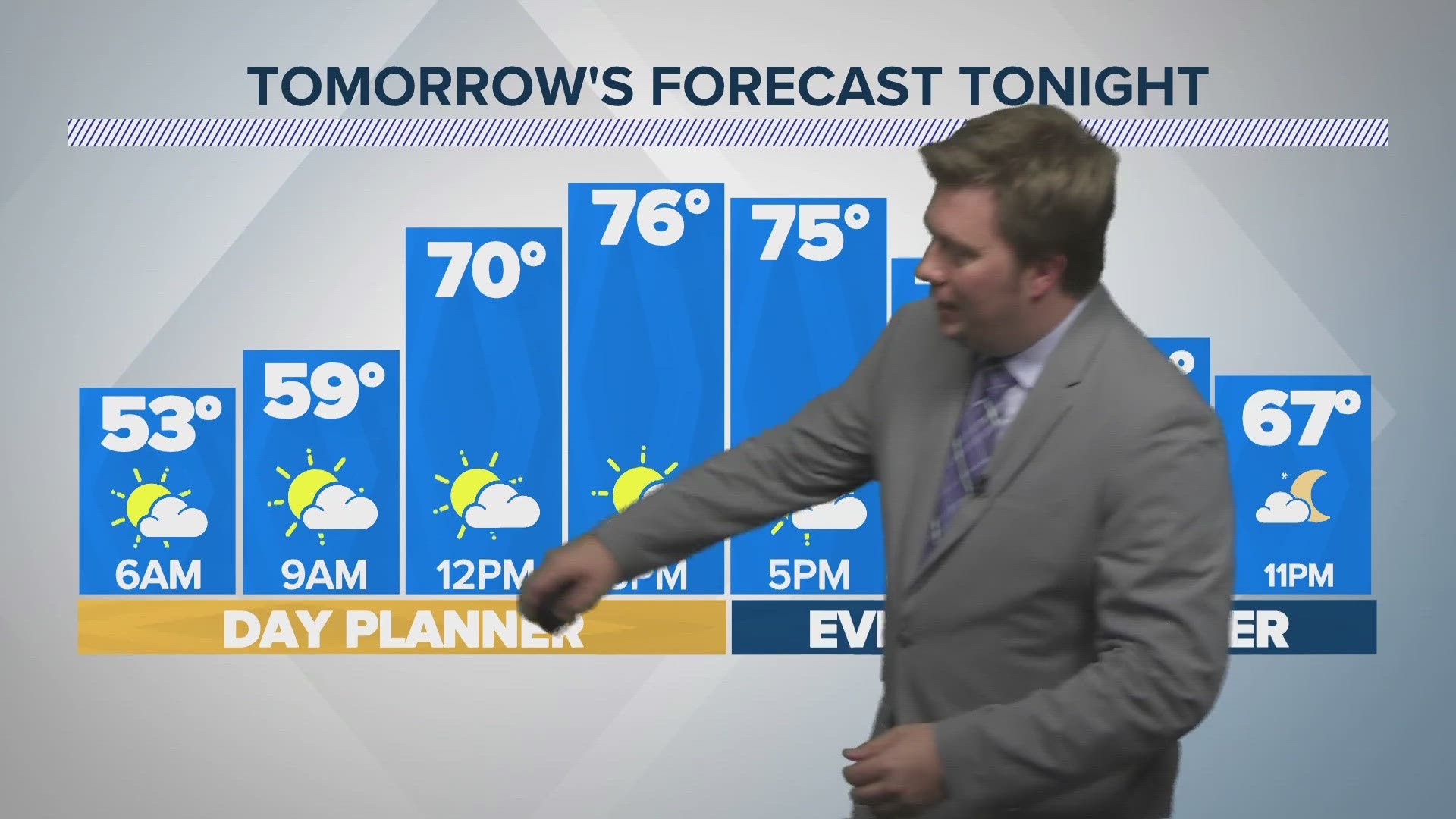TEMPLE, Texas — With rain, sleet and maybe even a little snow in the forecast this week in the Central Texas area, it's important to prepare in case you get stranded in your car during a storm or in your home in the case of a weather-related disaster.
If you have to go out during a winter storm, the American Red Cross suggests the use of public transportation if available.
"About 70 percent of winter deaths related to ice and snow occur in automobiles," the Red Cross said on its website.
If you must drive during a winter storm, the Red Cross said drivers should travel when there's daylight, if possible, and take another person with you. Also, make sure to let someone know your destination, your route and your expected arrival time.
An emergency kit should also be stored inside your car at all times. Here's what you should have in your kit:
WINTER DRIVING EMERGENCY KIT
- Jumper cables
- First aid kit
- Ice scraper
- Extra hats (wool, if possible)
- Extra jackets and gloves
- Extra socks
- Extra sets of dry clothing
- Snacks (canned fruits, nuts, high-energy snacks)
- Several bottles of water
- Warm broth in a thermos
- Fully charged cellphone OR a two-way radio
- Cellphone charger
- Blankets or sleeping bags
- Newspapers (for insulation)
- Plastic bags (for sanitation)
What if you do get stranded? What should you do? The most important thing is to not leave your car, the Red Cross said.
Here's the complete list the Red Cross provides on it website of what drivers should do if they get stranded inside their car in a winter storm.
IF YOU GET STRANDED
- Stay in the vehicle and wait for help. Do not leave the vehicle to search for assistance unless help is visible within 100 yards (91 meters).
- Display a trouble sign to indicate you need help. Hang a brightly colored cloth (preferably red) on the radio antenna and raise the hood after snow stops falling.
- Run the engine occasionally to keep warm. Turn on the engine for about 10 minutes each hour (or five minutes every half hour). Running the engine for only short periods reduces the risk of carbon monoxide poisoning and conserves fuel. Use the heater while the engine is running. Keep the exhaust pipe clear of snow, and slightly open a downwind window for ventilation.
- Leave the overhead light on when the engine is running so that you can be seen.
- Do light exercises to keep up circulation. Clap your hands and move your arms and legs occasionally. Try not to stay in one position for too long.
- If more than one person is in the vehicle, take turns sleeping. If you are not awakened periodically to increase body temperature and circulation, you can freeze to death.
- Huddle together for warmth. Use newspapers, maps, and even the removable floor mats for added insulation. Layering items will help trap more body heat.
- Watch for signs of frostbite and hypothermia. Severe cold can cause numbness, making you unaware of possible danger.
- Drink fluids to avoid dehydration, which can make you more susceptible to the ill effects of cold and to heart attacks.
- Avoid overexertion. Cold weather puts an added strain on the heart. Shoveling snow or pushing a vehicle can bring on a heart attack or make other medical conditions worse
In addition to a winter driving emergency kit, you should have an emergency survival kit in your home in the case of any weather-related disaster. Here’s the full list from the Red Cross of what you should have in your survival kit at home.
EMERGENCY KIT AT HOME
- Water: one gallon per person, per day (3-day supply for evacuation, 2-week supply for home)
- Food: non-perishable, easy-to-prepare items (3-day supply for evacuation, 2-week supply for home)
- Flashlight
- Battery-powered or hand-crank radio (NOAA Weather Radio, if possible)
- Extra batteries (Similar item available in the Red Cross Store)
- Deluxe family first aid kit
- Medications (7-day supply) and medical items
- Multi-purpose tool
- Sanitation and personal hygiene items
- Copies of personal documents (medication list and pertinent medical information, proof of address, deed/lease to home, passports, birth certificates, insurance policies)
- Cell phone with chargers (Similar item available in the Red Cross Store)
- Family and emergency contact information
- Extra cash
- Emergency blanket
- Map(s) of the area
Consider the needs of all family members and add supplies to your kit:
- Medical supplies (hearing aids with extra batteries, glasses, contact lenses, syringes, etc)
- Baby supplies (bottles, formula, baby food, diapers)
- Games and activities for children
- Pet supplies (collar, leash, ID, food, carrier, bowl)
- Two-way radios
- Extra set of car keys and house keys
- Manual can opener
Additional supplies to keep at home or in your survival kit based on the types of disasters common to your area:
- Whistle
- N95 or surgical masks
- Matches
- Rain gear
- Towels
- Work gloves
- Tools/supplies for securing your home
- Extra clothing, hat and sturdy shoes
- Plastic sheeting
- Duct tape
- Scissors
- Household liquid bleach
- Entertainment items
- Blankets or sleeping bags
More weather stories on KCENTV.com:



